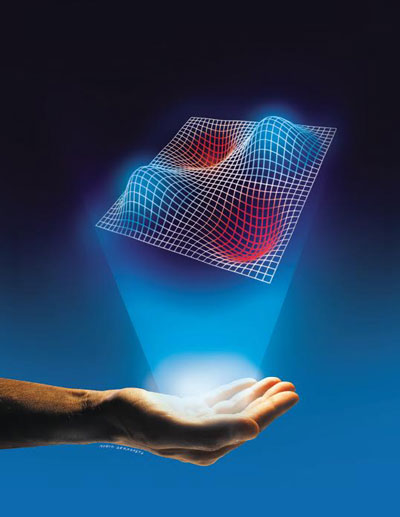
The shape of the electron in a high temperature superconductor
(Mario Sermoneta)
Scientists from Bar-Ilan University and Harvard have cracked the code of several enigmatic experiments — performed over the past 15 years on superconductors — by developing a mathematical tool to find the shape of the electrons in these materials. Their recent discovery published in Nature Physics provides an innovative technique for calculating the shapes of electrons. This finding will help scientists gain a better understanding of the properties of complex materials, said Dr. Emanuele Dalla Torre of BIU’s Department of Physics.
Dalla Torre, together with Harvard’s Dr. Yange He and Prof. Eugene Demler, used holographic logic to compile an algorithm for visualizing the shape of an electron in a superconducting material. This successful collaboration clarified the puzzling results of a series of experiments performed in the past 15 years, resolving a mysterious scientific enigma.
 According to quantum mechanics, electrons can possess wave-like properties. “The wave shape, however, is not always apparent, and tends to vary depending on the conditions of the material that hosts the electron. Until now, scientists had viewed the shape of an electron only in isolated atoms — in a vacuum — but not within a complex material containing a vast array of atoms, where the outline of each electron is indistinguishable,” said Dalla Torre.
According to quantum mechanics, electrons can possess wave-like properties. “The wave shape, however, is not always apparent, and tends to vary depending on the conditions of the material that hosts the electron. Until now, scientists had viewed the shape of an electron only in isolated atoms — in a vacuum — but not within a complex material containing a vast array of atoms, where the outline of each electron is indistinguishable,” said Dalla Torre.
“We developed a mathematical algorithm that helped us analyze high-precision measurements of cuprates — copper- oxygen compounds known to maintain the best superconductive properties, thus enabling us to reconstruct the shape of the electrons in these wondrous materials. The shape that we found contains positive (blue) and negative (red) regions (as pictured in the figure). The electrons are suspended within an ordered structure of atoms: The blue circles indicate oxygen atoms, while the red circles indicate copper atoms. For the first time ever, we isolated and confirmed a unique shape of an electron within a complex material,” explained Dalla Torre.
“Superconductors are materials that at room temperature, barely conduct electricity. However, when cooled below a certain temperature — the critical temperature — they morph into superheroes and conduct electric currents without any resistance, and without heating up or melting. These materials, are, therefore, highly sought after for their potential use in a variety of next-generation technologies,” explained Dalla Torre. “The highest critical temperature of superconductors discovered until now is that of cuprates, which require cooling to as low as -135° C to become superconductive. The costs involved in cooling down to these temperatures are prohibitively high, which explains the ongoing search for the Holy Grail — the highest possible critical temperature that provides economic viability,” Dalla Torre said.
“We applied the logic of a hologram, which is not an actual image, but rather an encoded pattern based on a special characteristic of light, in order to attain information about a 3D object from measurements of a 2D surface.” By extracting all the information encoded in a 2D STM (high resolution microscope) measurement of a cuprate, the scientists visualized the shape of an electron.
Some consider electrons to be the “soul” of a material — determining its color, its conductivity, and its entire chemical activity. Dalla Torre expects that this innovative technique for decoding shapes of electrons will enable the design of smarter materials suitable for ever-changing future technologies. “By gaining a better understanding of the behavior of materials, scientists may be on the path to finding the next superconductor,” he said.







